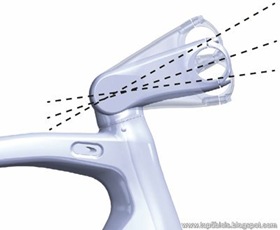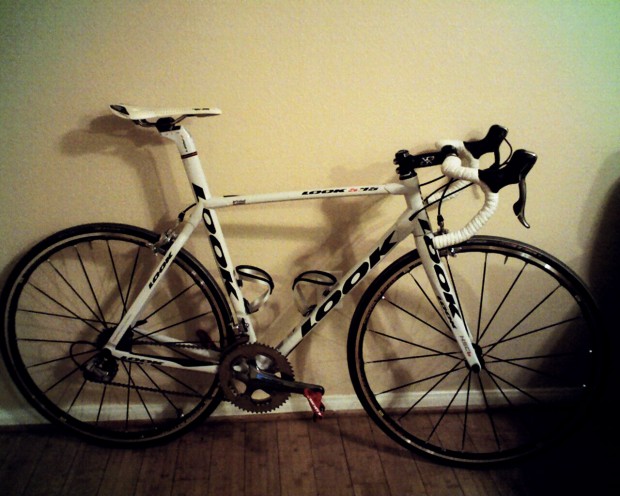

Two 10mm units gave us a saddle height of 715mm on our ‘small’ frame.

We called for additional spacers from LOOK’s UK distributor, Fisher Outdoor Leisure. LOOK have attempted to induce a degree of versatility by designing their two-piece, E-Post unit to accommodate simple plastic spacers. Much trepidation surrounds integrated seat masts and their potential to scupper resale. The LOOK 695 SR’s integrated E-Post made a significant contribution to the ride, making us feel as if we were part of the bike rather than perched upon it The ‘Trilob’ crank inserts to which the pedals attach, and which allow adjustment of the distance from BB centre to pedal axle (170mm, 172.5mm or 175mm), proved to be a doddle to remove, turn and reinsert. Much of the power transfer we felt was owed to LOOK’s proprietary one piece crankset, the Zed2, which, as mentioned in our first look, revolves around a sizeable 65mm bearing.
#LOOK 695 IPACK 2011 SERIES#
The 695 SR’s bottom bracket, a slimline affair compared to, say, Trek’s Madone 7, or the elephantine proportions of Cipollini’s RB1000, ably resisted the forces applied by our two test pilots (your correspondent and a rider who contested the PruTour series of televised, city centre criteriums in the late 1990s).

Having dealt with the general, we’ll move to the specifics. LOOK deploy the same technology in the rear triangle and the fork. The smoothness of the 695SR was most apparent on the rough surfaces of rural back roads.
#LOOK 695 IPACK 2011 SKIN#
It may also owe something to a design that sends a single carbon strand down one side of the top tube, around the headtube, and back to the junction with the seat tube, a technology known to LOOK as Continuous Fibre Design (CFD), hidden on the 659SR but visible beneath the carbon skin of the Cyfac. Perhaps this fundamental difference in ride quality is what separates European carbon frames from, dare we say it, those mass produced in the Far East. From LOOK, the first manufacturer to place a carbon frame in the peloton, we expected no less, and this quality of smoothness has been a feature of at least two other frames of our acquaintance produced to the low volume, high value template typical of European carbon manufacture: Wilier’s Zero 7 and, more recently, the Cyfac Absolu V2.


 0 kommentar(er)
0 kommentar(er)
